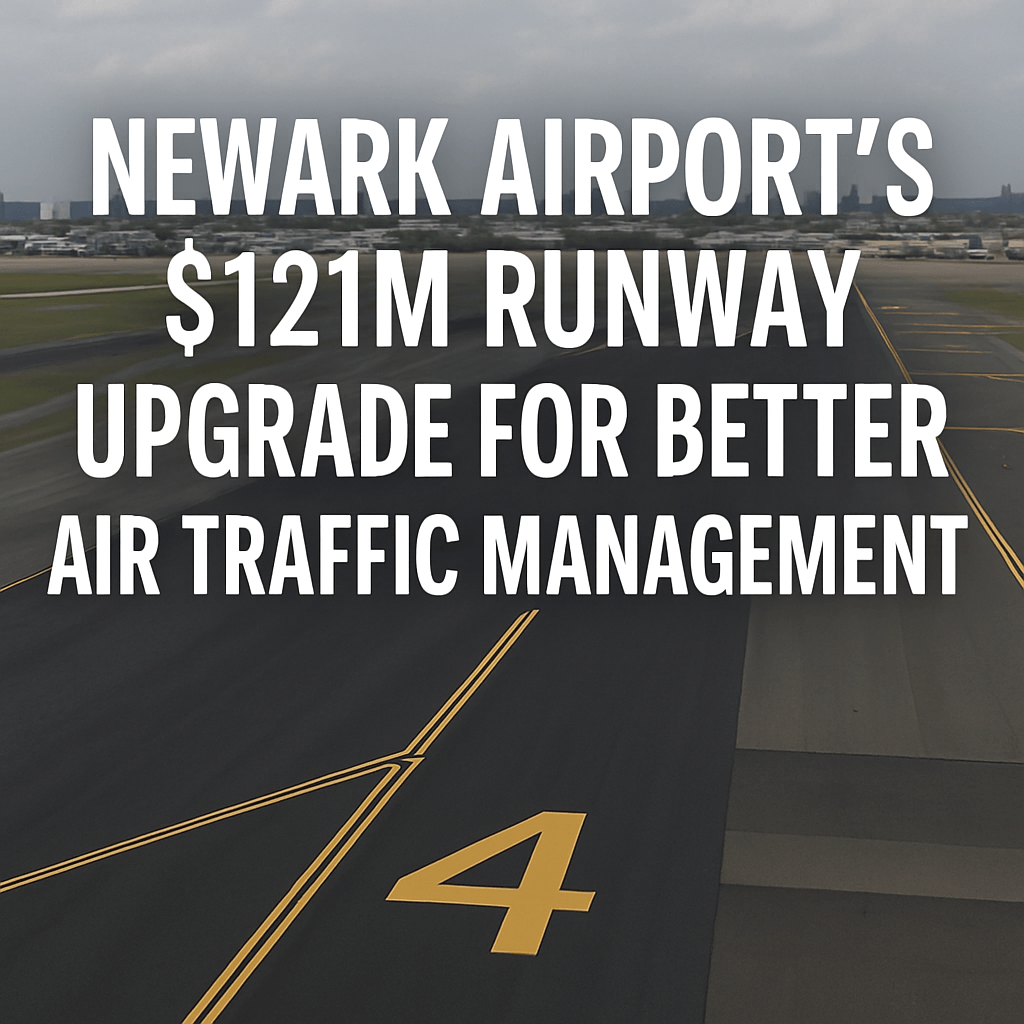Newark Airport’s $121M Runway Upgrade for Better Air Traffic Management

Newark Liberty International Airport has recently completed a significant renovation project on one of its three main runways at a cost of $121 million. The construction was completed nearly two weeks ahead of schedule, and the Federal Aviation Administration (FAA) anticipates that easing flight limits will commence next week, despite an ongoing shortage in the ranks of air traffic controllers nationwide.
FAA Testing Requirements Before Flight Limit Increase
While crews have initiated the use of the newly renovated runway for departures starting Monday, it is still undergoing essential testing, which is required before the FAA can lift existing flight limits. The runway is scheduled to accommodate arrivals only after these evaluations are finalized, with an expected certification date of June 10, as indicated by Transportation Secretary Sean Duffy.
Implications of Air Traffic Controller Shortages
This summer’s air travel season has already been impacted by several high-profile cancellations and delays. These issues stem largely from a critical shortage of air traffic controllers, intensified by technical malfunctions that disrupted operations at a crucial air traffic control facility in Philadelphia. Specifically, on April 28, two separate outages affected radar and communication systems, inhibiting the facility’s ability to effectively monitor and manage air traffic flow.
As a direct consequence of these outages, five air traffic controllers have taken medical leave lasting 45 days, prompting concern for the already diminished staff at the Philadelphia facility, which only had 16 certified controllers and five supervisors on duty thereafter. Additionally, the FAA is currently training another 16 controllers, expected to receive certification by October, but the cumulative shortage has led to substantial operational limitations.
Temporary Limits Due to Staffing Constraints
In response to the staff and construction challenges, the FAA imposed restrictions on Newark Airport, limiting it to 28 arrivals and 28 departures per hour. Prior to the technical difficulties witnessed this spring, the airport typically managed between 38 to 39 flights per hour. With the completion of runway renovations, officials project that this number can increase to 34 arrivals and 34 departures per hour—once testing and certification processes conclude.
Airline Operations and Customer Experience
United Airlines, which operates the majority of flights from Newark, has adapted to these operational restrictions by introducing larger aircraft to maintain passenger volumes, ensuring that even with fewer flights, the overall passenger count can still be effectively managed. However, due to the surge in negative media coverage surrounding travel disruptions, ticket sales have seen a decline, potentially leading to opportunities for discounted fares, according to United Airlines CEO Scott Kirby.
Infrastructure and Policy Recommendations
In light of the persistent challenges faced by air traffic control systems, including outdated technology and insufficient staffing, Secretary Duffy has emphasized the necessity for modernizing the national air traffic control framework. Looking towards the future, the FAA has recently upgraded operational software at the Philadelphia facility to mitigate future outages. Additionally, a new fiber optic line installed by Verizon between Philadelphia and New York is in the testing phase but remains unavailable for operational use until July.
As the air traffic control landscape evolves, the FAA plans to reassess flight limits again in October, contingent on the completion of training for new controllers. These measures represent a wider initiative aimed at not only rectifying the current staffing shortfalls but also at ensuring that technological vulnerabilities do not stem from antiquated systems.
Further Consequences for Air Travel
- Airlines’ operational adjustments, including aircraft upgrades to handle existing passenger volumes more efficiently.
- Increased collaboration between the FAA and airlines, to streamline flight scheduling and operational efficiencies.
- The growing need for Congress to address air traffic control funding in light of proposed budget cuts from House Republicans.
In summary, while the recent construction at Newark Airport marks a significant step towards alleviating current air traffic limitations, wider issues remain unresolved. The ongoing necessity to reform air traffic control systems comprehensively could influence how effectively the aviation industry can accommodate future travel demand.
Note: The potential for operational recovery at Newark hinges not only on infrastructure improvements but also on workforce stability within the FAA.
Source: fortune